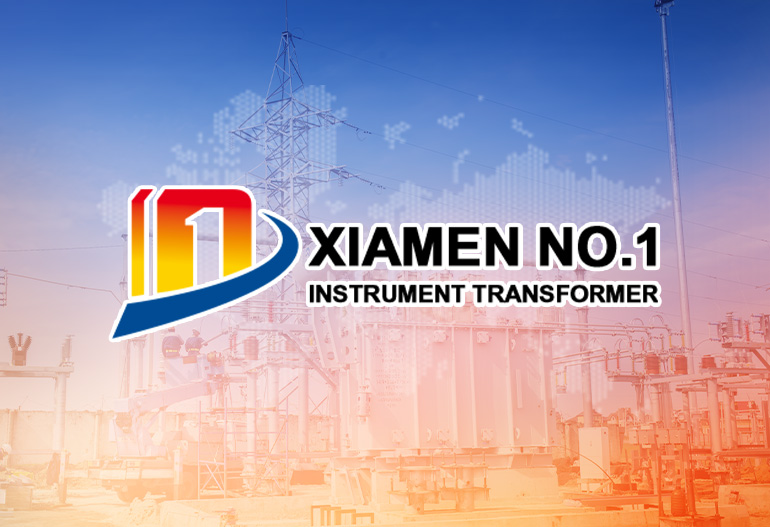
News
Configuration Principles of Current Transformers in Substation Relay Protection Systems
1. Fundamental Objectives of CT Configuration in Relay Protection
Ensure Selective Fault Isolation: CTs must accurately measure fault currents to enable relays to trip only the faulty circuit.
Guarantee Protection Sensitivity: CTs should provide sufficient current transformation ratio (CT ratio) to detect low-magnitude faults.
Maintain Protection Speed and Reliability: Proper CT placement and rating minimize protection misoperation or refusal.
2. Key Configuration Principles
2.1 Placement and Location Principles
| Protection Function | CT Placement Requirement | Rationale |
|---|---|---|
| Line Protection | At both ends of transmission lines (breaker sides). | Enables differential protection to compare currents at line terminals for rapid fault identification. |
| Transformer Protection | On each winding side (high-voltage, medium-voltage, low-voltage). | Facilitates differential protection against internal faults and backup protection for external faults. |
| Busbar Protection | At each bus section and incoming/outgoing feeder connections. | Enables busbar differential protection to isolate faults within the bus zone. |
| Generator Protection | Near the generator terminals and neutral grounding points. | Monitors stator and rotor currents for overcurrent, differential, and ground fault protection. |
2.2 CT Rating and Technical Parameter Selection
- Current Transformation Ratio (CT Ratio)
Matched to the maximum continuous operating current (120% of rated current) to avoid saturation during normal operation.
For fault conditions, CTs must withstand short-circuit currents (e.g., 20–50 times rated current) without excessive error.
- Accuracy Class and Burden
Class 5P/10P: For general protection (e.g., overcurrent, earth fault), allowing 5%/10% error at specified fault currents.
Class TP (Transient Performance): For high-voltage systems with significant transient components (e.g., generator or EHV line protection).
Accuracy Class: Selected based on protection type:
Burden Calculation: CT secondary burden (impedance) must not exceed the rated burden to maintain accuracy, considering cable length, relay input impedance, and parallel loads.
2.3 Redundancy and Backup Configuration
Multiple Secondary Windings:
Each CT should have 2–4 secondary windings to:
Serve primary protection and backup protection separately.
Support measurement and metering functions without interfering with protection.
Provide spares for future system upgrades.
Dual CT Sets for Critical Systems:
Ensure protection continuity if one CT fails.
Enable independent protection zones (e.g., main and backup differential protection).
In 220 kV+ substations or primary protection of generators/transformers, dual CT sets (primary and backup) are installed to:
2.4 Polarity and Connection Principles
Polarity Consistency:
CTs in differential protection systems (e.g., transformer or busbar differential) must have consistent polarity to avoid false differential currents.
Polarity marking (e.g., P1 to S1) must align with relay requirements to ensure correct phase comparison.
Wiring Configurations:
Star (Y) Connection: Used for phase and ground fault protection, providing a neutral point for ground current measurement.
Delta (Δ) Connection: Mitigates zero-sequence currents in transformer differential protection or voltage compensation.
Series/Parallel Connections: Adjust secondary current for relay input compatibility (e.g., 1 A or 5 A ratings).
2.5 Anti-Interference and Grounding Measures
Shielding and Grounding:
CT secondary cables must be shielded (e.g., copper braid) and grounded at one end (usually the control room) to prevent electromagnetic interference (EMI).
Unused secondary windings should be short-circuited and grounded to avoid high voltage induction during open-circuit operation.
Stray Capacitance Control:
Long secondary cables may require impedance matching or twisted-pair wiring to minimize signal distortion.
2.6 Compliance with Industry Standards
IEC Standards:
IEC 60044-1: Specifications for CTs, defining accuracy classes, transient performance, and testing methods.
IEC 61850: Digital substation standards for CTs in merged unit (MU) configurations for digital protection systems.
IEEE Standards:
IEEE C57.13: Requirements for CTs in power systems, including ratings, tests, and application guidelines.
3. Application Scenarios and Case Studies
EHV Substation (220 kV–1,100 kV):
CTs on each transformer winding with 4 secondary windings: 2 for main differential protection, 1 for backup overcurrent protection, 1 for metering.
Dual CT sets (primary and backup) for busbar differential protection to meet redundancy requirements.
Distribution Substation (10 kV–35 kV):
Single CT set per feeder with 2–3 windings for overcurrent protection, earth fault protection, and revenue metering.
Class 10P20 CTs (10% error at 20x rated current) suitable for medium-voltage fault levels.
4. Advanced Configuration Trends
Digital CTs (Electronic CTs):
Use optical fiber or low-power electromagnetic sensors to replace traditional CTs, reducing size, weight, and magnetic saturation risks (e.g., IEC 60044-8 compliant).
Intelligent Electronic Devices (IEDs) Integration:
CT secondary outputs merged with IEDs for digital protection, enabling data sharing and adaptive protection schemes.
Condition Monitoring of CTs:
Embedded sensors for CT temperature, partial discharge, and secondary burden monitoring to predict failures and optimize maintenance.
5. Conclusion

XUJIA
I graduated from the University of Electronic Science and Technology, majoring in electric power engineering, proficient in high-voltage and low-voltage power transmission and transformation, smart grid and new energy grid-connected technology applications. With twenty years of experience in the electric power industry, I have rich experience in electric power design and construction inspection, and welcome technical discussions.

